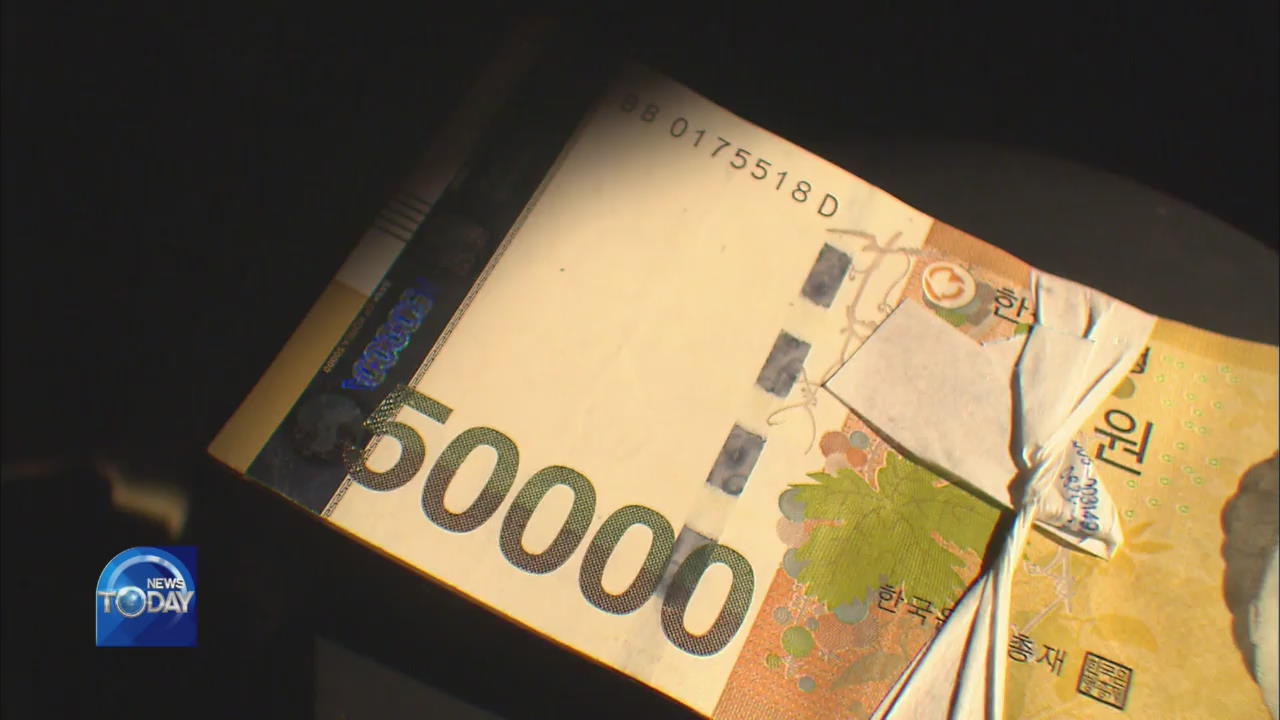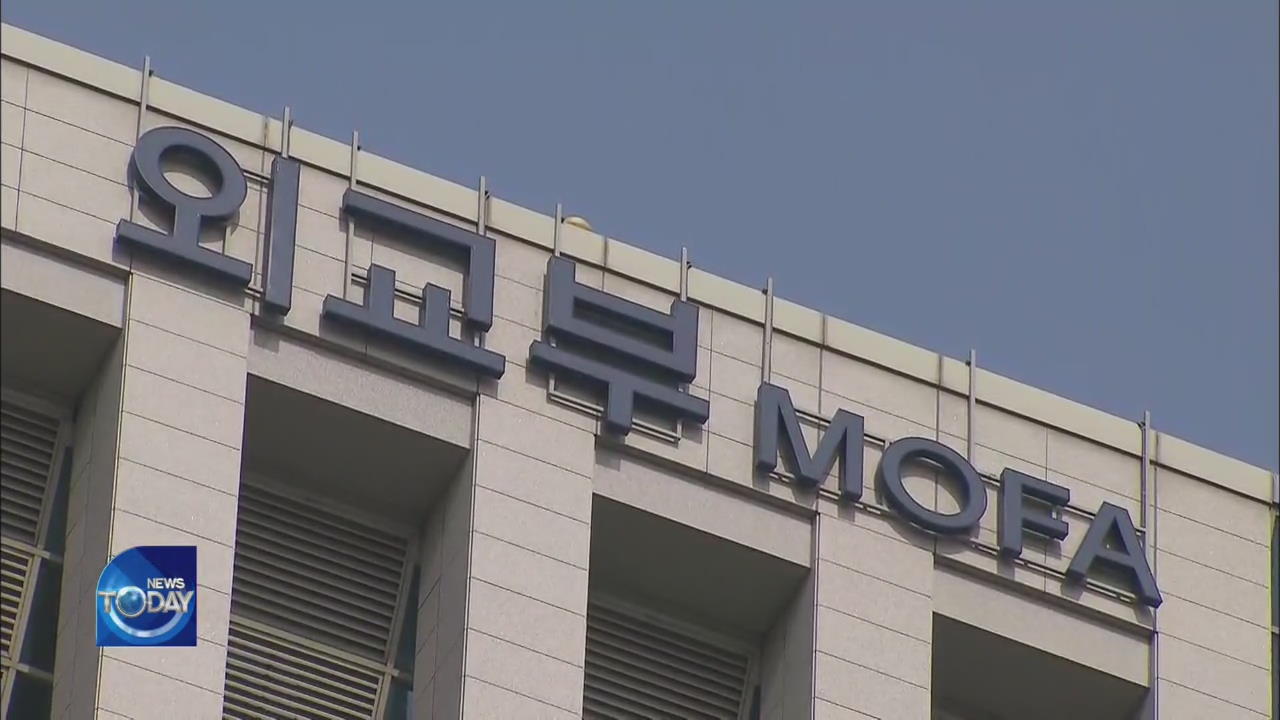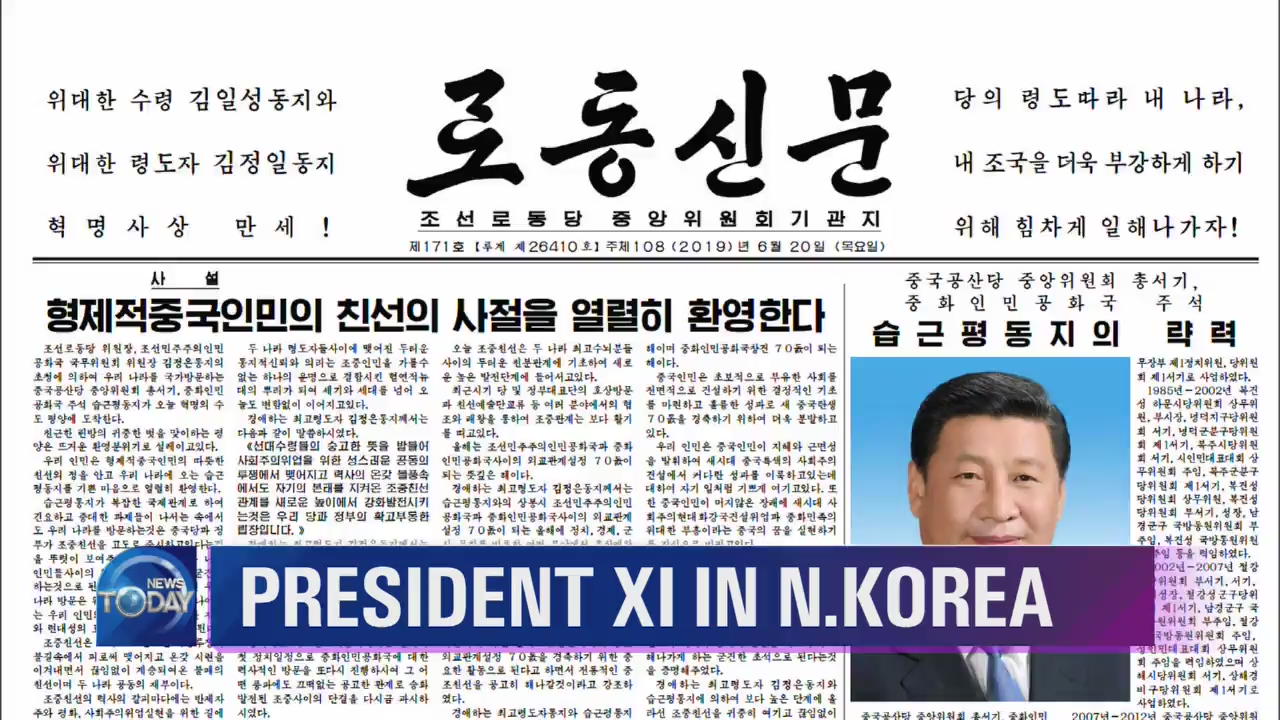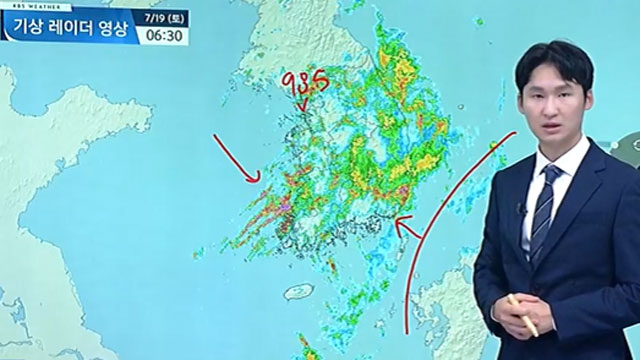50,000-WON NOTE RAMIFICATION
입력 2019.06.20 (15:07)
수정 2019.06.20 (16:48)
읽어주기 기능은 크롬기반의
브라우저에서만 사용하실 수 있습니다.
[Anchor Lead]
One out of every three banknotes circulated in Korea is a 50,000-won note. This high-denomination bill made currency use simpler and reduced social cost, but concerns over the banknote's misuse in the underground economy still remain as only half of the bills are recovered. Here's a more detailed look at the ramifications of the 50,000-won banknote that marks its first 10th anniversary on June 23rd.
[Pkg]
The Security Printing and ID Card Operating Corporation, also known as KOMSCO. There's a machine that works ceaselessly. The printer produces 50,000-won banknotes. From printing watermarks on paper to cutting and packaging, 50,000-won bills undergo eight steps before being sent out the door. The finished notes are bundled up by 10,000 bills, valued at 500 million won, then delivered to the Bank of Korea. To date, 3.7 billion of these banknotes, worth 18.5 trillion won, have been minted. Among all the paper money in circulation, 50,000-won notes take up the highest percentage both by amount and number, securing its spot as the most-used currency.
[Soundbite] LEE YEONG-HEE(SEOUL RESIDENT) : "I use them all the time, especially as gift money. I like it because it's easier to use and carry around."
Compared to printing 10,000 won bills, the currency management cost has been dramatically reduced, helping to save 60 billion won annually. But there is one concerning factor. While over 90% of the 10,000-won and 5,000-won notes have been returned to the Bank of Korea, only about half of the 50,000-won notes have been recovered. That means only half the bills out in the market are being circulated. 50,000-won notes are often used in the underground economy. Recently, stacks of 50,000-won bills were discovered at a delinquent taxpayer's home. Still, calls for the introduction of 100,000-won banknotes are mounting, given that the local economy has grown substantially and circulation of higher denomination bills is less shocking to the economy than re-denomination or changing the face value of banknotes.
One out of every three banknotes circulated in Korea is a 50,000-won note. This high-denomination bill made currency use simpler and reduced social cost, but concerns over the banknote's misuse in the underground economy still remain as only half of the bills are recovered. Here's a more detailed look at the ramifications of the 50,000-won banknote that marks its first 10th anniversary on June 23rd.
[Pkg]
The Security Printing and ID Card Operating Corporation, also known as KOMSCO. There's a machine that works ceaselessly. The printer produces 50,000-won banknotes. From printing watermarks on paper to cutting and packaging, 50,000-won bills undergo eight steps before being sent out the door. The finished notes are bundled up by 10,000 bills, valued at 500 million won, then delivered to the Bank of Korea. To date, 3.7 billion of these banknotes, worth 18.5 trillion won, have been minted. Among all the paper money in circulation, 50,000-won notes take up the highest percentage both by amount and number, securing its spot as the most-used currency.
[Soundbite] LEE YEONG-HEE(SEOUL RESIDENT) : "I use them all the time, especially as gift money. I like it because it's easier to use and carry around."
Compared to printing 10,000 won bills, the currency management cost has been dramatically reduced, helping to save 60 billion won annually. But there is one concerning factor. While over 90% of the 10,000-won and 5,000-won notes have been returned to the Bank of Korea, only about half of the 50,000-won notes have been recovered. That means only half the bills out in the market are being circulated. 50,000-won notes are often used in the underground economy. Recently, stacks of 50,000-won bills were discovered at a delinquent taxpayer's home. Still, calls for the introduction of 100,000-won banknotes are mounting, given that the local economy has grown substantially and circulation of higher denomination bills is less shocking to the economy than re-denomination or changing the face value of banknotes.
■ 제보하기
▷ 카카오톡 : 'KBS제보' 검색, 채널 추가
▷ 전화 : 02-781-1234, 4444
▷ 이메일 : kbs1234@kbs.co.kr
▷ 유튜브, 네이버, 카카오에서도 KBS뉴스를 구독해주세요!
- 50,000-WON NOTE RAMIFICATION
-
- 입력 2019-06-20 15:12:44
- 수정2019-06-20 16:48:45

[Anchor Lead]
One out of every three banknotes circulated in Korea is a 50,000-won note. This high-denomination bill made currency use simpler and reduced social cost, but concerns over the banknote's misuse in the underground economy still remain as only half of the bills are recovered. Here's a more detailed look at the ramifications of the 50,000-won banknote that marks its first 10th anniversary on June 23rd.
[Pkg]
The Security Printing and ID Card Operating Corporation, also known as KOMSCO. There's a machine that works ceaselessly. The printer produces 50,000-won banknotes. From printing watermarks on paper to cutting and packaging, 50,000-won bills undergo eight steps before being sent out the door. The finished notes are bundled up by 10,000 bills, valued at 500 million won, then delivered to the Bank of Korea. To date, 3.7 billion of these banknotes, worth 18.5 trillion won, have been minted. Among all the paper money in circulation, 50,000-won notes take up the highest percentage both by amount and number, securing its spot as the most-used currency.
[Soundbite] LEE YEONG-HEE(SEOUL RESIDENT) : "I use them all the time, especially as gift money. I like it because it's easier to use and carry around."
Compared to printing 10,000 won bills, the currency management cost has been dramatically reduced, helping to save 60 billion won annually. But there is one concerning factor. While over 90% of the 10,000-won and 5,000-won notes have been returned to the Bank of Korea, only about half of the 50,000-won notes have been recovered. That means only half the bills out in the market are being circulated. 50,000-won notes are often used in the underground economy. Recently, stacks of 50,000-won bills were discovered at a delinquent taxpayer's home. Still, calls for the introduction of 100,000-won banknotes are mounting, given that the local economy has grown substantially and circulation of higher denomination bills is less shocking to the economy than re-denomination or changing the face value of banknotes.
One out of every three banknotes circulated in Korea is a 50,000-won note. This high-denomination bill made currency use simpler and reduced social cost, but concerns over the banknote's misuse in the underground economy still remain as only half of the bills are recovered. Here's a more detailed look at the ramifications of the 50,000-won banknote that marks its first 10th anniversary on June 23rd.
[Pkg]
The Security Printing and ID Card Operating Corporation, also known as KOMSCO. There's a machine that works ceaselessly. The printer produces 50,000-won banknotes. From printing watermarks on paper to cutting and packaging, 50,000-won bills undergo eight steps before being sent out the door. The finished notes are bundled up by 10,000 bills, valued at 500 million won, then delivered to the Bank of Korea. To date, 3.7 billion of these banknotes, worth 18.5 trillion won, have been minted. Among all the paper money in circulation, 50,000-won notes take up the highest percentage both by amount and number, securing its spot as the most-used currency.
[Soundbite] LEE YEONG-HEE(SEOUL RESIDENT) : "I use them all the time, especially as gift money. I like it because it's easier to use and carry around."
Compared to printing 10,000 won bills, the currency management cost has been dramatically reduced, helping to save 60 billion won annually. But there is one concerning factor. While over 90% of the 10,000-won and 5,000-won notes have been returned to the Bank of Korea, only about half of the 50,000-won notes have been recovered. That means only half the bills out in the market are being circulated. 50,000-won notes are often used in the underground economy. Recently, stacks of 50,000-won bills were discovered at a delinquent taxpayer's home. Still, calls for the introduction of 100,000-won banknotes are mounting, given that the local economy has grown substantially and circulation of higher denomination bills is less shocking to the economy than re-denomination or changing the face value of banknotes.
이 기사가 좋으셨다면
-
좋아요
0
-
응원해요
0
-
후속 원해요
0

















이 기사에 대한 의견을 남겨주세요.